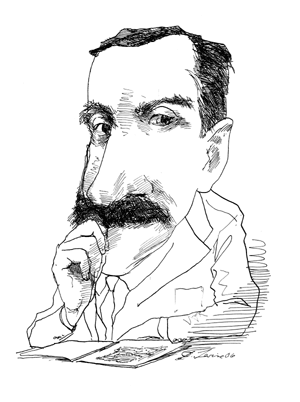In response to:
'Beware of Pity' from the July 13, 2006 issue
To the Editors:
Stefan Zweig “may have intended” Dr. Condor’s words about pity “as a tribute to Freud’s treatment of his patients” [Joan Acocella, “Beware of Pity,” NYR, July 13]?
Dr. Condor is depicted, even caricatured, as a boorish, self-inflated freeloader; a manipulator of patients’ gullibilities in the face of their suffering, and therefore an exploiter of suffering; a purveyor of quack treatments which he justifies with cynical claims that all sorts of strange treatments have inexplicably helped people. He is, as his name so plainly states, a feeder on the carrion of putrifying human lives.
Zweig goes on at painful length about the obnoxious and fraudulent Condor, leaving no doubt that it is only his clients’ gullibility and innocence that enable him to continue treating them at all.
Tribute indeed! How about condemnation?
Bill Dawes
New York City
Joan Acocella replies:
My point was not that Condor is admirable, but that Zweig tried hard to make him so. There is no other way to explain the book’s epigraph—taken from a statement that Condor makes in the course of the novel—about the two kinds of pity: the weak, sentimental kind and the tough, dry-eyed kind. Zweig clearly means us to understand that the former is Hofmiller’s kind, whereas the latter is the one that Condor aspires to, and has achieved, notably by marrying a blind patient whom he failed to cure. But even if the epigraph were not there, it would be very difficult, on the basis of Condor’s appearances in the novel, to say that Zweig meant us to see him as a villain. He is repeatedly shown as a perceptive, wise, and self-sacrificing doctor. (If he believes in “psychical” treatment, so did Freud, a hero of Zweig’s.) His only mistake is to assume that Hofmiller will have the strength to do what he did: marry an invalid in order to console her.
But I agree with Mr. Dawes that there is something peculiar about the portrait of Condor. After all, that one mistake of his is a prime contributor to the novel’s disastrous denouement. Then there is the episode where we see Condor at home with his wife. No one, I think, could read this scene and still believe that Zweig unambivalently regarded Condor’s radical brand of compassion as a good thing. Frau Condor whines and complains and clings; like Edith, she is a kind of monster. My sense is that Zweig was of two minds about pity—an expectable quandary in a man who had just left his wife to marry his secretary—and that the contradictions in his portrayal of Condor are the product of those mixed feelings. This is a fault in the novel, as I suggested in my essay.
This Issue
September 21, 2006




